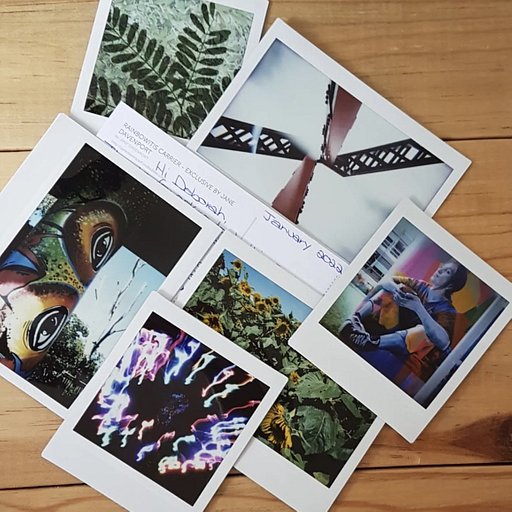Coronet Diadem N°2 Box Camera: Discovering a New Old Lomo World
1 18 Share TweetDuring the first 50 years of the last century, box cameras were very common. Before the 40s, most of them were just made with a rigid cardboard covered by leather. A huge number of box cameras was sold by Kodak at that time and the price was just $1; don’t forget that we are talking about the Ford era so in that period it was very common to find cheap mass production items: no frills, few functions but are extra durable. The Ford Model T of box cameras was the Kodak Brownie Box N°2, produced since 1910. After that, a lot of camera brands started to produce similar cameras or copies.
One of those cameras inspired by Kodak was the Diadem Box n°2 made by the Coronet Camera Company in 1930. I was really lucky in 2010 to buy this camera for almost €8 including delivery! Maybe it is not aesthetically perfect but it was in great working condition. This is a single speed shooter camera that uses a common 120 roll film.

Let’s have a look at the advantages and disadvantages of this camera. Nowadays, it is definitely surprising to discover that this device has more viewfinders than shooting settings. The top viewfinder is for vertical pictures while the one on the side is for horizontal pictures. Unfortunately, they are very small and it's absolutely hard to predict what you are gonna photograph. Pay attention to looking into the viewfinder from 30-40 cm, otherwise you will see nothing.
On the right side of the camera, there is a small lever for shooting. It has two positions and it will shoot with each one. Be very careful with this! After taking a shot, leave the lever on that position and don’t try to put it back. Otherwise you will shoot a second picture on the same frame (this is a way to have a multiple exposure).
As you can see in the pictures, the hardest part of using this camera is pointing. You could be never completely sure about what you will find on your roll film. This could also be very exciting! I was really going crazy waiting for the lab developing. The second problem of the small viewfinder is that it is really hard to take a pic at the right horizon angle. All I can say about this camera is that I have never used an simpler camera in my life. It's even easier than using a digital camera where you have to push the power button!
Even if it is very easy to use you have to be careful taking pictures for two reasons:
- First is that the shutter speed is not super fast, it is between 1/30 – 1/50 (not specified by the Coronet Company) and this means that you have to find a very stable position to take the photo, taking great care not to shake the camera.
- Second would be the position of the shutter is not comfortable so there is a high probability that there may be vibrations. Usually, you could solve these problems with tripods but not this time! The Diadem does not have a plug for a tripod so you need a wall or a car or something else that is stable.
On the owner’s guide of those cameras, it was highly recommended not to use the camera indoors. Reading about that, I decided to try it by myself to see what could happen: a 30s selfie!
Now I'd like to make some comments from a different point-of-view. Since I am a designer, I’m going to observe the products from the perspective of usefulness and ease-of-use.
For this reason I’ve decided to make a comparison between the Diadem model and two other cameras (one that was designed for 120 film and the smaller one for 127 film)
In the dimension comparison, the Diadem is the winner. It is much smaller than the Brownie 120 and its dimensions are more similar to the Brownie 127 (don’t forget that the 127 roll film is pretty smaller than 120). I would also like to say something about “safety”. camera locking is very important to protect your photographs if the camera opens accidentally. The Diadem is ultra safe and uses the same Brownie 120 system. In the picture you can see a comparison with some unsafe locking systems.

Having proved how easy it is to use the Diadem camera, we can say that it’s a good candidate to match any Lomographer's mood. Let’s see now if pictures can match those lo-fi snaps that we all like. When I bought the camera in 2010, I also bought a Fujicolor 120 160 ISO film. Unfortunately or fortunately, it has expired in 2012 so I was afraid about light sensitivity. I only have had an over blue exposition in one picture, which I tried to improve on with Photoshop.
The color saturation is not very high but I believe it may be a consequence of the expired film. Each picture taken by this camera has something special and unexpected, including guaranteed vignetting and sometimes some beautiful light leaks. Is this a 30s film camera that takes on the Lomo look? Yes it is.

Dario Marfella is an architect with a deep love for photography. He is a proud collector and reviewer that has a soft spot for vintage photo gear. His guest posts on the Lomography Magazine will give us a more detailed look at the world of vintage cameras, ranging from normal to the peculiar.
written by cheeo on 2020-06-26 #gear #review #coronet #diadem #dario-marfella #guest-post






























One Comment